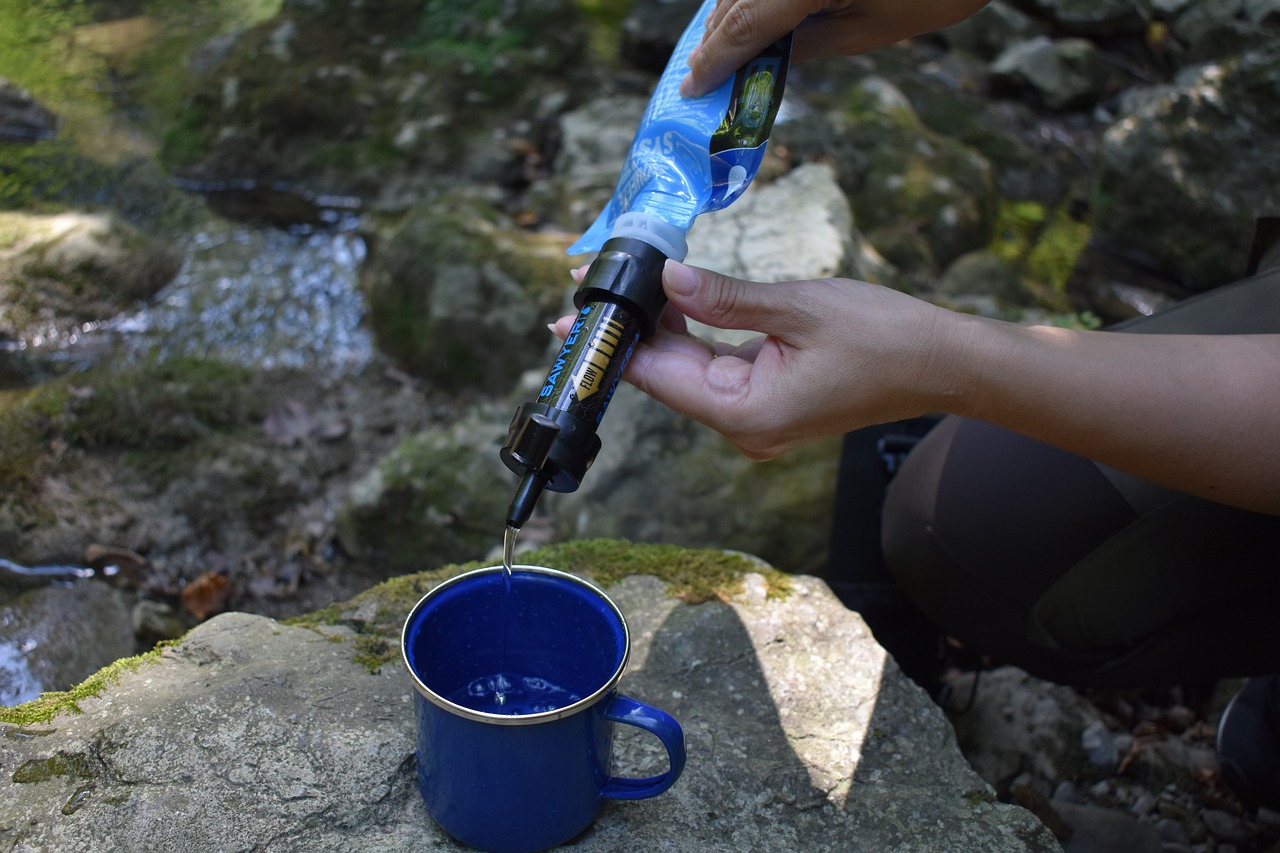Are you a prepper looking to protect yourself and your loved ones in the event of an electromagnetic pulse? Look no further! In this article, we will explore the top ways you can prepare yourself for an electromagnetic pulse as a prepper. From stocking up on essential supplies to developing communication systems that can withstand the impact, we’ve got you covered. So, grab a pen and paper because we are about to equip you with the knowledge you need to be ready for anything.

Understanding Electromagnetic Pulse (EMP)
What is an electromagnetic pulse?
An electromagnetic pulse, or EMP, refers to a short burst of electromagnetic energy that can have damaging effects on electronic devices and infrastructure. EMPs can be generated naturally, such as from a solar flare, or artificially, through the detonation of a nuclear weapon in the atmosphere. The pulse consists of a rapid change in the electric and magnetic fields, which induces powerful currents and voltages that can overload and damage sensitive electronics.
Different types of EMP
There are three main types of EMP: E1, E2, and E3. Each type of EMP has different characteristics and potential impacts on electronics.
-
The E1 pulse is the fastest and most damaging of the three. It is a high-frequency pulse that can cause immediate damage to electronics by inducing high voltages and currents. The E1 pulse is similar to the effects of a lightning strike and can disrupt or destroy electronic components.
-
The E2 pulse is a slower pulse that primarily affects power systems, such as transformers and transmission lines. It is caused by the rapid change in the magnetic field during a nuclear detonation and can cause widespread power outages.
-
The E3 pulse is a slower and longer-lasting pulse that mainly affects long transmission lines and can cause geomagnetic disturbances. It is caused by the interaction between the Earth’s magnetic field and the high-energy particles released during a nuclear detonation.
Understanding the characteristics of each type of EMP is crucial in assessing and mitigating its potential impact on electronics.
Assessing Your Vulnerabilities
Identifying potential sources of EMP
To effectively protect your electronics and prepare for an EMP event, it is essential to identify potential sources of EMP. These sources include both natural events, such as solar flares, and human-made events, such as a nuclear weapon detonation.
Solar flares, also known as coronal mass ejections (CMEs), are eruptions of charged particles from the Sun that can generate powerful EMPs. Monitoring solar activities and staying informed about space weather alerts can help in identifying the likelihood of a solar flare-induced EMP.
Human-made EMPs can be caused by the detonation of a nuclear weapon at high altitude. The electromagnetic effects of a nuclear EMP can potentially affect a large area, depending on the altitude and yield of the detonation.
Evaluating the vulnerability of your electronics
Once potential sources of EMP have been identified, the next step is evaluating the vulnerability of your electronics to EMP. Not all devices are equally susceptible to EMP, and their vulnerability depends on factors such as design, shielding, and distance from the EMP source.
Devices with longer cables or antennas are generally more vulnerable to EMP. Additionally, older electronic devices may be less resistant to EMP due to the lack of advanced shielding technologies.
It is essential to assess the vulnerability of each electronic device you wish to protect to determine the most appropriate mitigation strategies.
Conducting a risk assessment
A thorough risk assessment is crucial in understanding the potential impact of an EMP event on your electronics. This assessment involves evaluating the likelihood of an EMP event occurring, assessing the vulnerabilities of your devices, and determining the potential consequences of their failure.
By conducting a comprehensive risk assessment, you can prioritize your efforts and resources towards protecting the most critical electronics and develop appropriate mitigation plans.

Creating a Faraday Cage
What is a Faraday cage?
A Faraday cage is an enclosure made of conductive material that can shield against electromagnetic radiation, including EMP. It works by redistributing the electric charge and reducing the electric field inside the cage, thus protecting the contents from the effects of a strong electromagnetic pulse.
Materials required for building a Faraday cage
To build a Faraday cage, you will need the following materials:
-
Conductive material: This can include aluminum foil, copper mesh, or conductive fabric. The material should cover all surfaces of the enclosure and provide good conductivity.
-
Non-conductive container: This can be a cardboard box, a metal trash can, or any other non-metallic container that can be lined with the conductive material.
-
Insulating material: You will need an insulating layer, such as cardboard or foam, to separate the conductive material from the contents of the cage.
-
Tape or adhesive: You may need tape or adhesive to secure the conductive material to the container and make it electrically continuous.
Step-by-step guide to constructing a Faraday cage
-
Select a suitable container: Choose a container that is large enough to accommodate the electronic devices you wish to protect.
-
Line the container with conductive material: Cover the interior surfaces of the container with the chosen conductive material, ensuring that there are no gaps or openings.
-
Insulate the conductive material: Place an insulating layer over the conductive material to prevent direct contact between the contents of the cage and the conductive surface.
-
Secure the conductive material: Use tape or adhesive to secure the conductive material to the container, ensuring that it is electrically continuous and covers all surfaces.
-
Test the integrity of the Faraday cage: Before placing your electronics inside the cage, test its effectiveness by using a portable radio or cell phone. If the device loses signal or reception inside the cage, it indicates that it is adequately shielded against EMP.
By following these steps, you can create a Faraday cage to protect your electronics from the damaging effects of an electromagnetic pulse.
Protecting Essential Electronics
Identifying essential electronics for protection
When preparing for an EMP event, it is crucial to identify and prioritize the protection of essential electronics. These are the devices that are necessary for survival, communication, and maintaining critical systems.
Essential electronics can include items such as emergency radios, flashlights, communication devices, medical equipment, backup power systems, and any other devices essential for your specific needs and circumstances.
By identifying and focusing on protecting these essential electronics, you can ensure that you have the necessary tools and equipment to survive and navigate a post-EMP scenario.
Methods to shield electronics from EMP
There are several methods to shield electronics from EMP effectively. These methods focus on reducing the electromagnetic radiation that can penetrate and damage the devices.
One common method is to use a Faraday cage, as discussed earlier. By enclosing the electronics in a conductive enclosure, such as a metal box or foil-lined bag, the electromagnetic radiation is redirected around the protected devices, minimizing their exposure to the pulse.
Another method is to use EMP shielding materials, such as conductive fabrics or films, to cover and shield individual devices. These materials can be wrapped around or applied to the electronic device, creating a barrier that blocks or attenuates the electromagnetic radiation.
Additionally, it is essential to properly ground your electronics to ensure that any excess electromagnetic energy is safely directed away from the devices, further minimizing the risk of damage.
DIY techniques for protecting electronics
For those looking for do-it-yourself (DIY) techniques to protect their electronics from EMP, there are several options available.
One simple technique is to wrap electronics in multiple layers of aluminum foil or place them inside a foil-lined bag. The foil acts as a barrier, reflecting and redirecting the electromagnetic energy away from the devices. However, it is important to ensure that all surfaces are covered and that there are no gaps or openings.
Another DIY approach is to create homemade EMP shielding using conductive materials, such as copper mesh or conductive fabrics. These materials can be sewn or attached to a cover or pouch for the electronic device, providing a protective barrier against EMP.
While these DIY techniques may not provide the same level of protection as professional-grade solutions, they can offer some degree of shielding and help to minimize the potential damage from an EMP event.

Building an Off-Grid Power System
Importance of off-grid power in an EMP event
In the aftermath of an EMP event, power grids and electrical infrastructure are likely to be severely damaged or completely disabled. Having an off-grid power system becomes crucial as it ensures the availability of electricity for essential needs, such as lighting, communication, and powering critical equipment.
An off-grid power system relies on independent sources of energy, such as solar, wind, or hydroelectric power, to generate electricity. By being self-sufficient and disconnected from the main power grid, you can avoid the vulnerability of traditional power systems to EMP-induced damage.
Choosing the right power source (solar, wind, etc.)
When considering an off-grid power system, it is important to choose the right power source based on your location, energy requirements, and available resources.
Solar power is a popular choice for off-grid systems due to its reliability and widespread availability. By harnessing the sun’s energy through solar panels, you can generate electricity even in remote locations. Wind power is another viable option for areas with consistent wind patterns, while hydroelectric power is suitable for locations near rivers or other water sources.
It is essential to assess your energy needs and consider factors such as available space, climate conditions, and maintenance requirements when selecting the most suitable power source for your off-grid system.
Setting up and maintaining an off-grid power system
Building an off-grid power system involves several key steps:
-
Design and planning: Determine your energy requirements, select the power source, and design the system accordingly. Consider factors such as battery storage, inverters, and backup generators.
-
Installation: Install the necessary components, including solar panels, wind turbines, batteries, and charge controllers. Ensure that all equipment is properly grounded and wired to withstand potential EMP effects.
-
Testing and maintenance: Regularly test the system for functionality and perform routine maintenance to ensure optimal performance. Monitor battery levels, clean solar panels, and conduct inspections to identify and address any issues promptly.
-
Backup plans: Have contingency plans in place, such as backup generators or alternative power sources, in case of system failures or extended periods of limited power generation.
By following these steps and maintaining your off-grid power system, you can have a reliable source of electricity in the event of an EMP, ensuring your critical electronics remain functional.
Stockpiling Essential Supplies
Importance of stockpiling
In a post-EMP scenario, access to essential supplies may be severely limited or completely disrupted. Stockpiling essential supplies in advance is vital to ensure your survival and well-being during the recovery period.
Stockpiling allows you to have an adequate supply of food, water, medications, personal hygiene items, and other essential resources that may become scarce or unavailable after an EMP event. By having a well-stocked pantry and essential supplies, you can sustain yourself and your loved ones until normalcy is restored.
Essential supplies for post-EMP survival
When stockpiling essential supplies, consider the following items:
-
Food: Store non-perishable food items with a long shelf life, such as canned goods, dried fruits, grains, and protein-rich foods like beans and nuts.
-
Water: Aim for a water supply of at least one gallon per person per day for drinking and basic hygiene needs. Consider water purification methods and storage containers.
-
Medications: Ensure an ample supply of necessary medications for chronic conditions or first aid needs. Rotate medications to maintain freshness.
-
Personal hygiene items: Stock up on toiletries, soap, toothpaste, toilet paper, and menstrual products. Include basic hygiene supplies such as hand sanitizer and disinfectants.
-
Tools and equipment: Have a collection of basic tools, such as a multi-tool, flashlight, batteries, manual can opener, and a portable stove or cooking equipment.
-
Clothing and bedding: Prepare appropriate clothing for different weather conditions, including warm layers, waterproof gear, and sturdy footwear. Have extra blankets and sleeping bags for comfort.
Long-term storage techniques
To ensure the longevity of your stockpiled supplies, it is important to employ proper long-term storage techniques:
-
Rotation: Regularly rotate food and other perishable items to maintain freshness and avoid spoilage. Use the oldest items first and replace them with new ones.
-
Proper packaging: Store food in airtight containers or Mylar bags with oxygen absorbers to prevent spoilage and insect infestation. Vacuum-sealed storage bags can also be effective.
-
Temperature and humidity control: Store supplies in a cool, dark, and dry location to maximize shelf life. Avoid exposure to extreme temperatures or moisture.
-
Inventory management: Keep a detailed inventory of your stockpile, including expiration dates and quantities, to ensure you have a clear idea of what needs to be replenished.
By following these storage techniques, you can maintain a well-preserved stockpile of essential supplies that will support you in a post-EMP scenario.

Developing Communication Strategies
Losing access to modern communication methods
In the aftermath of an EMP event, traditional communication methods, such as phones, internet, and other electronic devices, are likely to be disrupted or non-functional. Developing alternative communication strategies becomes essential for maintaining contact with others and staying informed.
Alternative communication devices to consider
When modern communication devices are rendered useless, consider the following alternative communication devices:
-
Two-way radios: Handheld two-way radios, such as walkie-talkies, can provide reliable short-range communication within a group or community.
-
Ham radios: Amateur radio operators (ham operators) can use ham radios to communicate over long distances, depending on their license and equipment. Invest in the necessary training and licensing to utilize ham radio effectively.
-
CB radios: Citizens Band (CB) radios operate on specific channels and do not require a license. These radios can be useful for short-range communication, especially in areas with a well-established CB radio community.
-
Morse code: Learning Morse code can be a valuable skill in emergency situations as it provides a rudimentary form of long-distance communication using light or sound signals.
Creating a communication plan for your prepper group
To ensure effective communication within your prepper group or community, it is important to develop a communication plan in advance:
-
Establish a network: Identify members within your group who possess communication devices or skills. Determine who will be responsible for relaying messages and maintaining contact with others.
-
Frequency planning: Assign specific frequencies or channels for different modes of communication. This will help ensure that everyone is on the same page and can easily connect with each other.
-
Code words and signals: Develop a set of code words or signals for specific situations or messages. This can help maintain operational security and prevent sensitive information from being intercepted.
-
Practice and training: Regularly practice using alternative communication devices and techniques within your group. Conduct training sessions to familiarize members with the equipment and protocols.
By creating a communication plan and utilizing alternative communication devices, you can maintain essential contact and coordination with others during an EMP event.
Learning Survival Skills
Basic survival skills for post-EMP scenarios
In a post-EMP scenario, mastering basic survival skills becomes crucial for your well-being and ability to manage the challenges that arise. Some essential survival skills to consider include:
-
Shelter building: Learn how to construct improvised shelters using natural materials or basic tools. Understand different shelter designs and their suitability for various environments.
-
Fire starting: Acquire the skills and knowledge to start and maintain a fire using various methods, such as friction, spark-based tools, or chemical fire starters. Fire can provide warmth, cooking, and signaling capabilities.
-
Water procurement and purification: Learn how to locate and collect water from natural sources, such as streams or rainwater. Familiarize yourself with water purification methods to ensure a safe drinking supply.
-
Navigation and orientation: Understand basic navigation techniques using landmarks, celestial bodies, or simple compasses. Learn how to read maps and navigate without modern technology.
-
Foraging and food procurement: Gain knowledge of edible wild plants, hunting, fishing, and trapping techniques. Increasing your self-sufficiency in procuring food can be vital in a resource-scarce environment.
-
Self-defense and security: Develop basic self-defense skills and strategies to protect yourself and your group. Learn about situational awareness, personal security measures, and non-lethal defense methods.
Acquiring knowledge of self-sufficiency
In a post-EMP scenario, self-sufficiency becomes paramount to survival. Acquiring knowledge of self-sufficiency involves learning skills and techniques that reduce your dependence on external resources. Some essential areas of self-sufficiency to focus on include:
-
Gardening and food production: Learn how to cultivate and maintain a garden for growing vegetables, fruits, and herbs. Understand soil preparation, crop rotation, and pest control methods.
-
Food preservation and storage: Acquire skills in food preservation techniques such as canning, drying, fermenting, and root cellaring. These methods help extend the shelf life of food and reduce waste.
-
Renewable energy systems: Explore sustainable energy solutions, such as solar panels, wind turbines, or hydroelectric power, to generate electricity for your off-grid needs.
-
Livestock and animal husbandry: Familiarize yourself with animal care and husbandry practices relevant to your location. Consider raising backyard chickens, rabbits, or other small livestock for food and other resources.
-
DIY and repair skills: Develop skills in basic carpentry, plumbing, electrical work, and mechanical repairs. Being able to fix or build essential items can save resources and provide valuable capabilities.
-
Wilderness survival skills: Learn wilderness survival skills, such as finding and purifying water, identifying edible plants, creating friction fires, and understanding shelter building techniques.
By acquiring knowledge of self-sufficiency, you can enhance your resilience and adaptability in a post-EMP world, ensuring your survival and well-being.

Joining a Prepper Community
Benefits of joining a prepper community
Joining a prepper community can provide numerous benefits in preparing for an EMP event:
-
Shared knowledge and skills: By joining a prepper community, you can tap into a wealth of knowledge and collective wisdom. Members can share their experiences, skills, and insights, further enhancing your preparedness.
-
Resource sharing and collaboration: Prepper communities often foster a spirit of collaboration, allowing members to share resources, equipment, and tools. This pooling of resources can increase overall preparedness and help fill any gaps in individual preparations.
-
Mutual support and accountability: Being part of a community provides a support network during challenging times. A prepper community can offer emotional support, practical assistance, and a sense of belonging, making it easier to navigate the uncertainties of a post-EMP scenario.
-
Joint endeavors and projects: Prepper communities often engage in joint projects, such as community gardens, group training exercises, or infrastructure development. These endeavors can enhance collective self-sufficiency and increase the overall resilience of the community.
Finding and connecting with like-minded individuals
To find and connect with like-minded individuals, consider the following steps:
-
Local networking: Attend local events, workshops, or seminars related to prepping or self-sufficiency. These gatherings provide opportunities to meet others who share similar interests and preparedness goals.
-
Online communities and forums: Join online prepper communities, forums, or social media groups dedicated to preparedness. Participate in discussions, seek advice, and connect with individuals who align with your values and objectives.
-
Community organizations and clubs: Look for local organizations or clubs focused on emergency preparedness, survival skills, or self-reliance. These groups often offer regular meetings, training sessions, or collaborative projects.
-
Prepper expos and conventions: Attend prepper expos and conventions where you can interact with vendors, attend workshops, and meet fellow preppers. These events create opportunities for networking and building connections with like-minded individuals.
Collaborating and sharing resources with the community
Once you have found a prepper community, it is important to actively collaborate and share resources to maximize preparedness efforts:
-
Knowledge and skills: Share your knowledge and skills with the community by offering workshops, training sessions, or demonstrations. Similarly, seek opportunities to learn from others and participate in skill-building activities.
-
Resource sharing: Collaborate with community members to identify resource gaps and collectively address them. This can involve sharing tools, equipment, surplus supplies, or specialized skills.
-
Group projects: Initiate or participate in group projects that benefit the community as a whole. These can include community gardens, renewable energy installations, or disaster preparedness workshops for the wider community.
-
Communication and coordination: Establish effective communication channels within the community to facilitate information sharing, updates, and emergency planning. Use tools such as group messaging apps, mailing lists, or regular meetings to stay connected.
By actively engaging with a prepper community and fostering a spirit of collaboration and resource sharing, you can enhance your preparedness efforts and increase your collective resilience in the face of an EMP event.
Staying Informed and Updated
Monitoring news and government alerts
Staying informed about potential EMP threats and developments is key to maintaining an effective preparedness plan. Stay on top of news and government alerts related to EMP by following these steps:
-
News sources: Regularly check credible news sources that cover topics related to EMP, space weather, national security, and emergency preparedness. These sources can provide valuable insights and updates on the latest developments.
-
Government agencies: Stay connected with government agencies and organizations responsible for national security and emergency management. These agencies, such as FEMA or the Department of Homeland Security, may issue alerts, guidelines, or specific recommendations in regards to EMP preparedness.
-
Space weather alerts: Monitor space weather alerts and forecasts provided by space agencies, such as NASA or NOAA. These alerts can help predict solar flares or other space weather events that have the potential to generate EMPs.
-
Community and local alerts: Sign up for community or local emergency alerts through platforms like reverse 911 systems or emergency notification apps. These alerts can provide relevant information, guidance, or evacuation notices in case of an EMP event.
Keeping up with advancements in EMP protection
Advancements in EMP protection technologies and techniques are continuously being developed. To stay updated and informed about these advancements, consider the following:
-
Research and publications: Stay updated through research papers, scientific publications, and articles focused on electromagnetic pulse protection. These sources often discuss new technologies, testing methods, and emerging trends.
-
Industry events and conferences: Attend industry events, conferences, or trade shows related to EMP protection, electronics, or emergency preparedness. These events provide insights into the latest advancements in EMP protection and offer opportunities to connect with experts and manufacturers.
-
Online communities and forums: Engage with online communities, forums, or social media groups dedicated to EMP protection and preparedness. Participate in discussions, ask questions, and stay connected with individuals who actively follow EMP-related advancements.
-
Professional organizations and certifications: Consider joining professional organizations or seeking certifications related to EMF shielding, electronics protection, or disaster preparedness. These organizations often offer access to industry updates, exclusive research, and networking opportunities.
By actively seeking and staying informed about advancements in EMP protection, you can continuously update your preparedness plans and implement the most effective strategies to safeguard your electronics and well-being.
